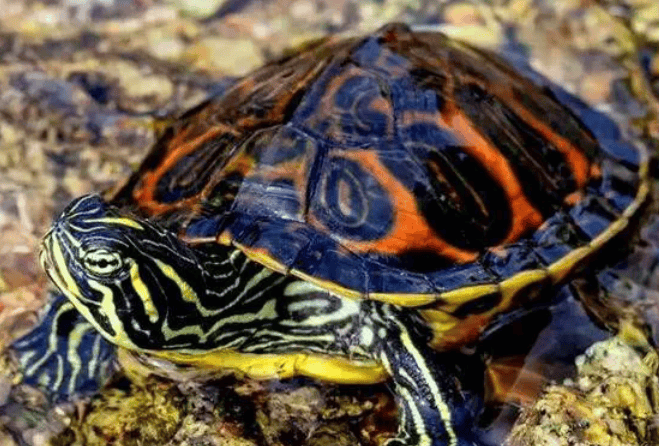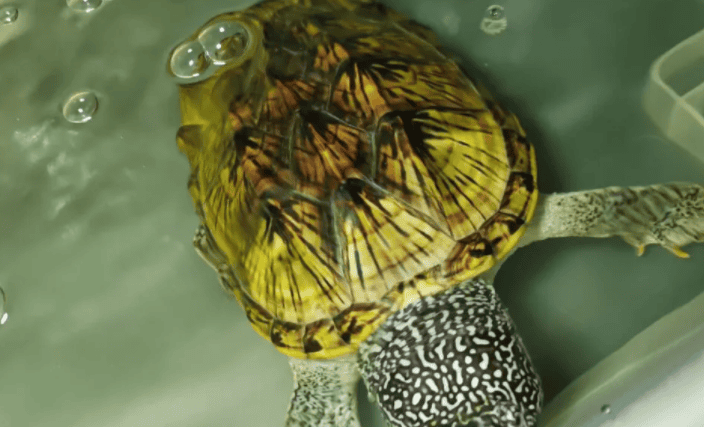Hair color, a hotly discussed topic among turtle lovers, what kind of secrets does it hide? From light colors to dark environments, to the subtle effects of sunlight, technology and hard work have finally joined forces to reveal the answer to us.

Nowadays, we can no longer underestimate the power of technology. The reason why we humans have always ruled the earth is absolutely inseparable from our technological strength. It is no exaggeration to say that the power of technology can “change destiny against the will of heaven.” Just think about the beauties around us. With the improvement of technology, you can see more and more beauties in front of the camera. Doesn’t this greatly make us happy?
However, in the circle of turtle friends, some players have begun to try to use feed additive pigments to adjust the hair color of turtles. But don’t worry, the pigments normally sold on the market have been strictly reviewed by the state, and their safety is guaranteed.
Among the many pigments, astaxanthin and canthoracin are the most commonly used. Some turtle friends shared their experience that the effect of astaxanthin alone is not significant, while the effect of Astaxanthin is good when used alone or in combination with astaxanthin. It is worth mentioning that this combination is also used to farm precious salmon.
In recent years, astaxanthin has been highly sought after due to its excellent antioxidant function. It is widely used not only in feed and food, but also in cosmetics. Therefore, adding an appropriate amount of astaxanthin to turtle feed is also a reasonable choice.
Petocele yellow may be familiar to you. It also has a name - canthaxanthin, which is a naturally occurring carotenoid. This substance is found in mushrooms, crustaceans, fish, algae, eggs, blood and liver. As a feed additive, it is mainly used to improve the color of meat and eggs and is harmless to the human body.
However, some turtle friends are worried that although it is harmless when taken in moderation, long-term use may cause damage to the gastrointestinal tract and liver. Is this a disguised explanation that for turtles it is both a beauty and a life-threatening talisman?

Of course, if you prefer to let your turtle have natural hair color, then the following tips may be able to help you.
Many friends are concerned about the hair color of ornamental turtles. During the breeding process, we need to pay attention to four key factors: genes, environment, food and sunlight. Genes are decisive, but we can help the turtle's hair color through the last three factors.
Take Xiaoqing as an example. If you want to raise colorful Xiaoqing, choosing a light-colored environment is the key, such as a white box and slightly light green sun-dried water. When it comes to food, variety is important and can include branded turtle food, small fish, and shrimp. Moderate amounts of sunlight are also essential, but avoid exposure and make sure the sun is shining directly on the turtle. Sunlight and outdoor environment are great tools for hair color.
As a popular species on the market, egg turtles also receive attention for their hair color. Since egg turtles cover multiple species, they need to be classified and treated in the hair coloring process and cannot be generalized. The light-colored environment is suitable for white lips, red faces, etc.; while the dark-colored environment is more suitable for tiger stripes, razors, giants, etc. Turtle friends who like stripes.
The flame turtle has become the star species in the live broadcast room with its bright colors and high ornamental value. Raising them from an early age and enjoying the coloring process undoubtedly adds to the fun of raising them. Everyone agrees that sweet potato leaves help the hair color of the flame turtle. Of course, there is absolutely no harm in feeding sweet potato leaves. At the same time, sunshine is essential, especially since it also likes to bask in the sun.
Although the power of science and technology can help our turtles "change their lives against the odds," we still feel like something is holding back in our hearts, which is not very comfortable. However, I also worry about whether eating too much technological food will really become a "death reminder". If the tortoise is gone, what else is there to do with hair color?
Some turtle friends also thought, should they be kept for a period of time using technological methods and then raised using normal methods for a period of time? Will this not hurt the turtle? In theory, this is a good approach. Turtles have a long life cycle, and we have to try them ourselves to know everything.

 扫一扫微信交流
扫一扫微信交流
发布评论